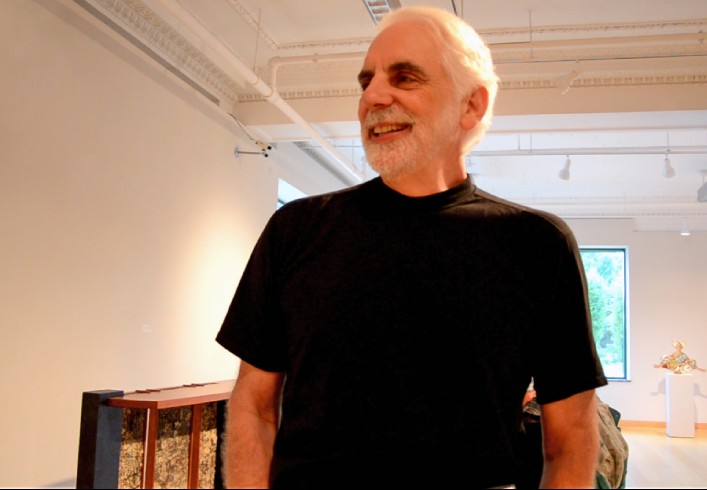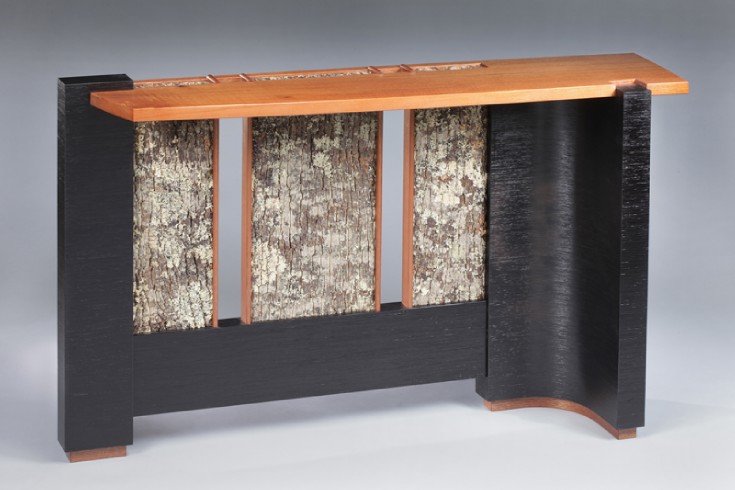Our Marketing & Design intern, Hannah Gray, had the opportunity to talk to some of our Speaking in Species artists. In this Q&A, Hannah learns about the decisions Penland artist John Clark makes when he creates new pieces.

What is the relationship is between functionality and aesthetics in your work?
Function is key to what I do. I very rarely make things that don’t begin with function as the primary criteria for making the piece. There have been a few times, but not very many. Some of the pieces I’ve made are more sculptural I guess, but function is still a primary element.
How do you choose which species of woods to use?
I almost always use more than one wood in a piece. This one (looks to Hall Table) has two, usually there’s three. Well actually this one does have three; I built a surface in bark, and that is a third species and a third element. I usually use two that are complementary, and the third is usually more just for detail. You know, eyeing things, or emphasizing different pieces in the piece. But I’m mostly looking for color, and occasionally figure. But usually the colors are the main things I’m contrasting.
Do you stain them at all, or is it all natural?
Almost never. This one (Hall Table) is actually stained oak – the black is. But I don't use stains that alter the color of the wood. When you go to a hardware store you see a shelf that has stains on it, and it’s things like “golden oak” and “heirloom maple.” They’re usually playing off an idea of what those woods could look like, but they usually just end up clouding it, and you don’t really see the wood. So if you stay away from those things like I tend to do, you see the whole character of the wood. People say “what is that?” because they’ve never seen maple with just a clear finish on it. They’re used to seeing it stained with color. And I like that.
How has your work changed over the years and where do you think it’s going -- or do you know?
I think that’s a good thing, that you don’t know. The earliest work I made had sort of an organic nature to it, or at least an organic feel as far as treatment of the edges and shapes and overall form. And then it became very geometric, very hard-edged, for a while there. I’ve definitely gone back to a softer, more curved kind of thing. I think the edges and the treatment of surfaces are the main things. In an overall sense, it’s always been about furniture. Lately I’ve been interested in doing public art, so pieces for that are usually on a larger scale and bring in a lot of other materials. Most of them are outdoor pieces so they have to be very durable, first of all. You can’t make very many things out of just plain wood that are going to last very long outside.
What made you get into public art?
I like the scale, economics, and market of it. I also like the collaborative process of it because you’re never just doing your own thing now. It’s not like you just make a piece and put it in a gallery or somebody commissions you to make a piece to put in their home. When you’re doing a public piece, you have to go through this whole hierarchy of committees and approval processes and so forth. Things are constantly having to be ironed out; there are details and criteria that have to be met that you don’t have when you’re just making a piece of furniture.


0 Comments